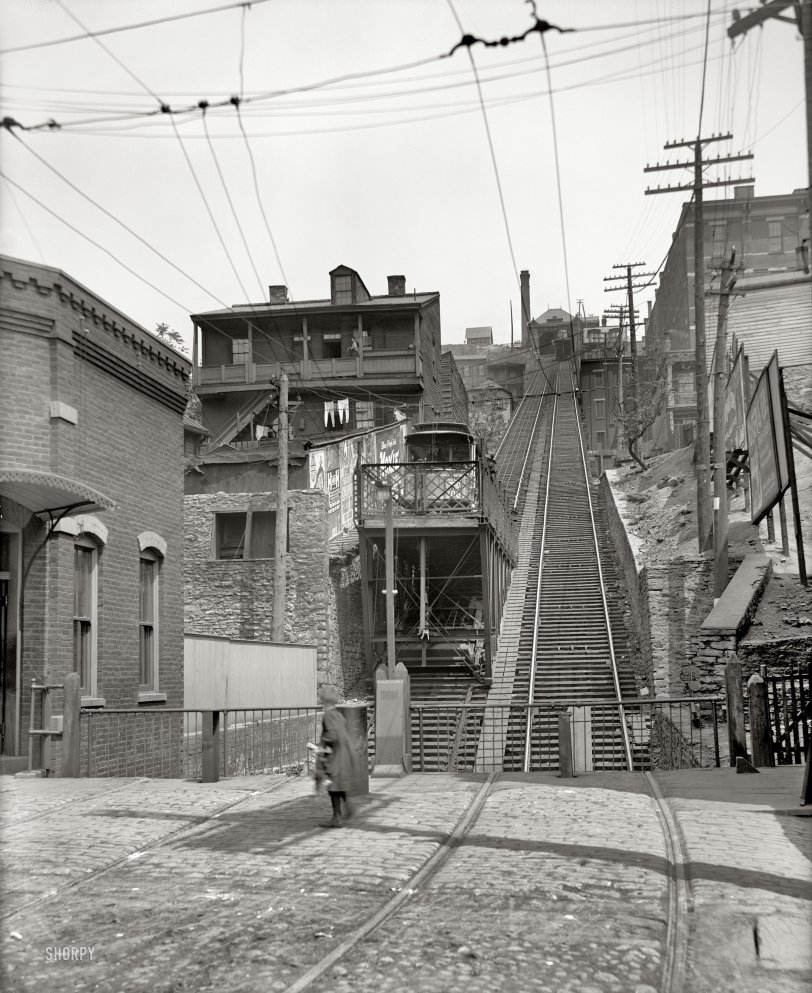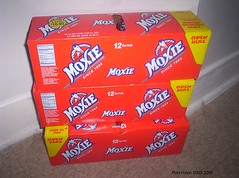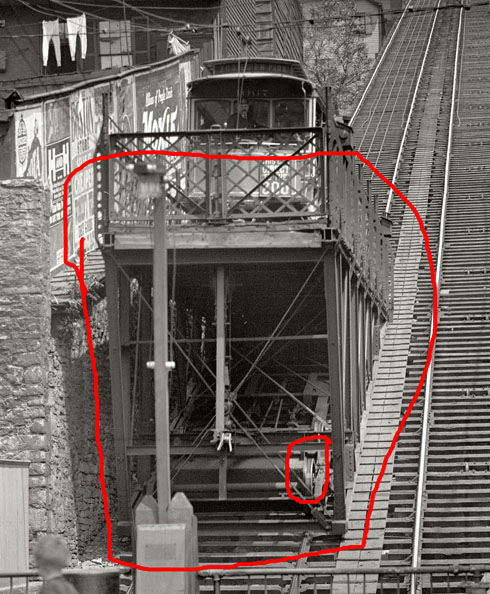


Framed or unframed, desk size to sofa size, printed by us in Arizona and Alabama since 2007. Explore now.
Shorpy is funded by you. Patreon contributors get an ad-free experience.
Learn more.

- What a headache!
- Baldwin 62303
- Baldwin VO-1000
- Cold
- No expense spared
- Tough Guys
- Lost in Toyland
- And without gloves
- If I were a blindfolded time traveler
- Smoke Consumer Also Cooks
- Oh that stove!
- Possibly still there?
- What?!?
- $100 Reward
- Freeze Frame
- Texas Flyer wanted
- Just a Year Too Soon
- WWII -- Replacing men with women at the railroad crossing.
- Yes, Icing
- You kids drive me nuts!
- NOT An Easy Job
- I wonder
- Just add window boxes
- Icing Platform?
- Indiana Harbor Belt abides
- Freezing haze
- Corrections (for those who care)
- C&NW at Nelson
- Fallen Flags
- A dangerous job made worse
Print Emporium
The Underwear Railroad: 1906

Cincinnati, Ohio, circa 1906. "Mount Adams incline." A closeup of one of Cincy's famous incline railway lines, and of a lesser-known clothesline. Also: Moxie! 8x10 inch dry plate glass negative, Detroit Publishing Company. View full size.
Yes, Moxie!
Moxie is the official soft drink of the State of Maine (as of May 10, 2005). If you're going to be in Maine in July, check out the Moxie Festival. (www.moxiefestival.com)
On Top of the Incline
This is an exceptional photo. Fascinating. My mother and her parents often took the Mount Adams incline to visit the famous Rookwood Pottery plant located on top of the incline hill. Mount Adams is still a wonderful place to visit via a walking tour. Some of these tall narrow buildings still exist alongside and in between newer structures on the Mount Adams hillside. It remains one of the cultural pockets of Cincy. For anyone interested, Rookwood Pottery relocated in 2009 from Clifton to the newly rejuvinated Over-the-Rhine historical downtown neighborhood. Cincinnati has a very active preservationist association. This city is alive with rejuvinating historical areas. Go Cincy.
I rode the Adams Incline
It closed in the 40s but I remember it well. In the summer months they would use open air cars with great views of downtown. There were several inclines in Cincy but they disappeared when buses could finally master the city's many steep hills. By 1950 all the streetcars had been replaced by buses.
Double-wire overhead
"The conductor hooks his trolley onto the wire".
The conductor would place BOTH trolley poles, one on each wire. Cincinnati used a negative return wire instead of using the track, so each car had four trolley poles.
Re: Which came first
See the three cables in the middle of the track behind the car at the bottom. Those pull the car up and let it down. Most of the power comes from gravity pulling the car that is on the way down the incline. Its weight and movement help pull the upward bound car. The engine supplying any extra power needed is up in the building at the top of the hill, probably steam at that time. Both cars are basically attached to the same cables wrapping around a wheel at the top.
University of Shorpy
I've learned more by visiting Shorpy than any history book I read in school. Thanks!
Funiculars
In Europe we call an inclined railway a funicular. This one had two counterbalanced platforms linked by three cables (two hosting and one safety cable). Steam engines (see the chimney) were used to power incline. There were siz I-beams, two between the tracks at the bottom station and the same at the top station and one I-beam on each platform. The normal position of all these I-beams was up. Each I-beam was counterbalanced and automatically dropped down when the platform reached the end of the track.
Up and Down
More about all five of Cincinnati's inclines here.
Moxie Lives!
Moxie lives on in the far north of New England. I can't imagine why. My grandmother used to drink this stuff when I was a kid and it's vile. For extra vileness, she used to mix it 50/50 with milk.
I was shocked when I saw it for sale on a recent trip through Maine. I hadn't seen Moxie in a store for 30 years.

Streetcar Escalator
The attentive viewer will note that the sturdy railings protecting the ends of the street-mounted tracks can be lowered when the "elevator" approaches street level, as evidenced by the rollers and center thrust pillar. The conductor hooks his trolley onto the wire, and the car may roll off the inclinator and onto the street, as shown in the submitted photo.
Logistics, please
I still don't see how the cars met up with the street level tracks. What about that fence and what appears to be a street lamp directly in front of it? Does all that stuff fold down?
And shouldn't that little girl get out of the way?
[The "inclinator" (outlined in red) carries the car up and down. I also outlined one of its wheels. When it gets to the bottom, the streetcar is level with the street and moves onto the tracks in the foreground. - Dave]

That'll stop 'em
If you look closely you'll see a pair of I-beams rising vertically out of the pavement directly between each pair of tracks. These created a simple-but-effective barrier to trolleys accidentally rolling forward into the abyss when no counterbalance platform was in the station.
The one on the left looks as if it actually did its duty a time or two.
Gone forever
This was Cincinnati's last and probably most famous incline. Every once in a while someone suggests rebuilding it, since the original right of way is largely intact. Main problem: the area at the base of the incline is now a spaghetti bowl of interstate highway concrete. The track supports are still easily seen in the google satellite view.
More info
There's a book covering this called "Cincinnati; City of Seven Hills and Five Inclines" including photos, drawings and histories of all of Cincinnati's inclined plane railroads.
That photo is vivid and transfixing
Every element of it shows the complete complexity of human endeavor and effort. Human care and attention went into every atom of that shot -- from the placement of the posters along the fences, to the cobbles in the street, to the stitches in the long drawers. Is any of it left at all?
You got a lot o' Moxie pal
Fellow Shorpsters correct me if I'm wrong but I believe the Moxie soft drink brand pre-dated CocaCola by several years at least.
What firetraps!
How all those wooden shacks were kept from all burning down I'll never know. Most were heated with stoves.
Which came first
the tracks, or the houses they rub right by? And can someone tell me how the cars made it up that incline? Were they towed up?
Angel's Flight
Looks alot like Los Angeles.
Streetcar track gauge
It's not only the foreshortening that makes the streetcar tracks look rather far apart. The Cincinnati Street Railway used a broad track gauge of 5 feet 2 inches in those days.
Also: Moxie!
Dave wasn't going to let us Shorpyites overlook a Moxie sign two weeks in a row. I like Moxie.
























On Shorpy:
Today’s Top 5